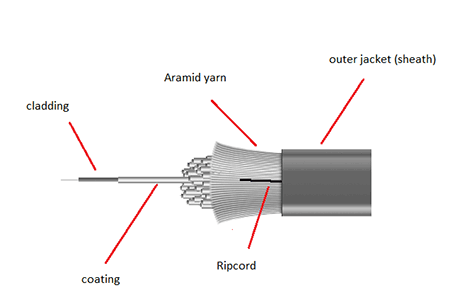Weather Impact on Fiber Optics
DOES COLD WEATHER IMPACT FIBER OPTICS CABLING AND CONNECTORS?
This first week of January, 2014 has shown how record-breaking cold temperatures affect people, equipment, schedules and life in general. The fans at the Green Bay NFL game defied odds by sitting through 4 quarters of exceptional cold temperatures. Air travel was delayed or suspended; numerous areas were without power or heat. I’m sure the folks in Canada are mystified as to why we are upset with the artic weather. So the whole condition brought to mind a recent inquiry about fiber optic cabling, and if it could tolerate -40C.
In the world of network equipment, we generally think of LANs and WANs. Of course, for WANs, fiber optic cabling has to be protected, based on the environment it is installed in. After all, the cabling can cover a distance of up to 100Km, unlike LANs, which will generally be installed inside the building or across no more than a mile for connectivity.
Once the cabling is pulled to inside the building, then typically it is going to live within a controlled environment. Network Administrators only concern themselves with the cabling once it is in the building. So who is in charge of pulling the cabling outside the building, from point A to point B over say 40Km? The cable installer. By the way, this cabling could be owned by the company that needs the connectivity, but more often, it is owned by a city, who commissions having it installed. As a result, companies lease the fiber from the city; the fiber could also be leased from a major phone company who provides the cabling infrastructure to many cities.
There are three environments fiber can be located in: indoor, outdoor and aerial. Furthermore, there are different cable jacket materials: Polyethylene (PE), Polyvinyl Chloride (PVC), Polyvinyl Difluoride (PVDF), and Low Smoke Zero Halogen (LSZH) plastics. To protect the fiber itself, there is Aramid Yarn, Central strength member, and Ripcord.
For indoor cables, fire safety is the most important factor in cable selection, especially those running through plenum spaces. They must pass flame- retardant and smoke-inhibitor ratings. For outdoor cables, moisture resistance, temperature tolerance and UV resistance are very important when selecting cabling. If installing fiber cabling via aerial, it must endure extreme temperatures and survive high winds.
The cable jacket is just one layer of protection for fiber cabling; for outdoor cabling, PE and PVC are typically chosen. PE in particular tolerates extreme temperatures. PVDF is excellent for indoor.
Under the cable jacket is the next layer of material for protection. Aramid yarn is very tensile, and the kind of yarn used in fire fighter’s clothing; this is usually found in indoor cabling. Central strength member is common for outdoor cabling and can be made of steel, fiberglass or aramid yarn.

If network devices are installed in variable temperature environments, folks will look for ruggedized equipment that includes sturdy or rugged connectors too. The alternative is obtaining network equipment that meets extended temperatures, offers standard ST, SC or LC fiber connectors, but is housed in a sturdy NEMA enclosure, perhaps even with heat or cooling features to ensure the equipment continues to operate as expected.
There are many other elements I did not touch on, such as the structure of tight-buffered versus loose tube cable, plenum ratings, submarine fiber optic cables, and armored fiber optic cables. The simple answer to the question is yes, you must consider what kind of fiber optic cabling to install in extreme cold, including how to house them, and yes, there are solutions.
Recommended Posts

Co-Creation, Paving the Way to a More Connected Future
November 27, 2018

The Benefits of a ‘Do It For Me’ Mentality in the IIoT
October 5, 2018

Why You Need to ‘Mind the Gap’ in Manufacturing Technology
August 31, 2018
